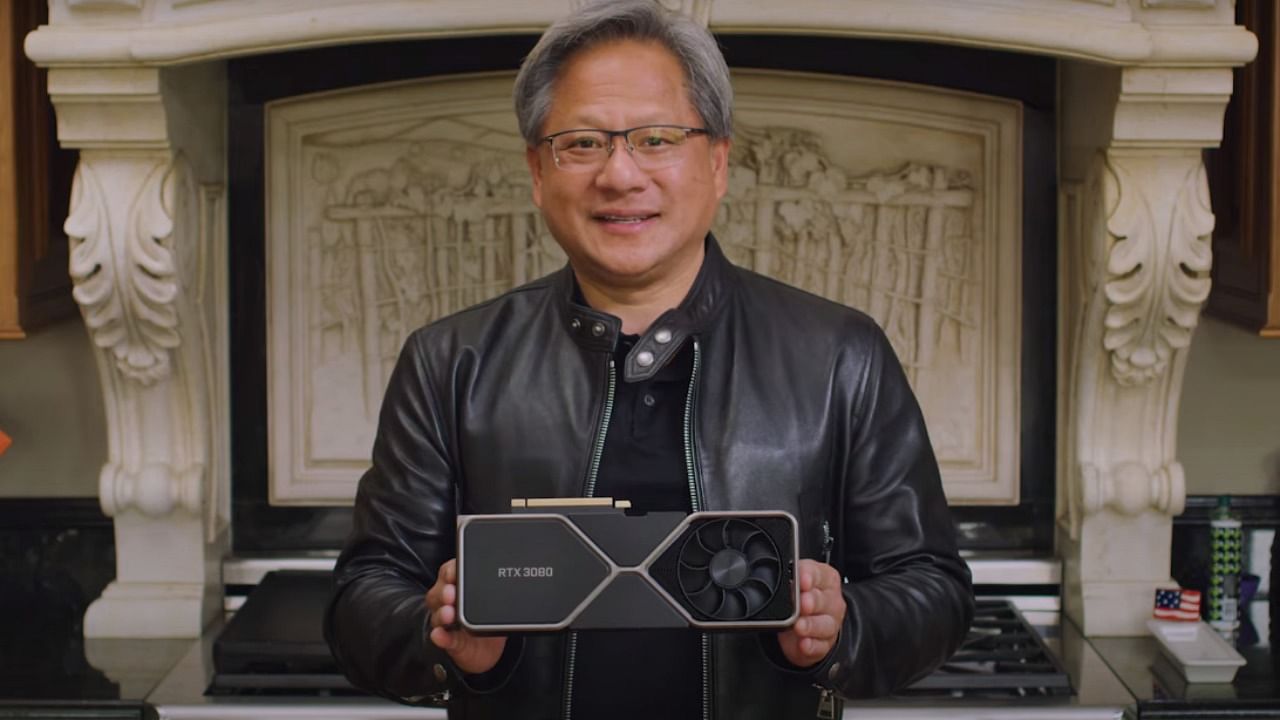
Aiming to usher in another leap in PC graphics technology after the RTX 20 series in 2018, Nvidia announced the Ampere-based RTX 30 family of graphics cards.
Featuring 28 billion transistors built on a custom Samsung 8 nanometer process, the RTX 30 cards feature up to 30 TFLOPS of compute power, and upto 58 TFLOPS of ray-tracing performance with doubled the ray-triangle calculation compared to Turing.
According to Nvidia, the GeForce RTX 30 Series deliver up to 2x the performance and 1.9x the power efficiency over previous-generation GPUs.
“If the last 20 years was amazing, the next 20 will seem like nothing short of science fiction,” Nvidia CEO Jensen Huang said, speaking from the kitchen of his Silicon Valley home. Today’s NVIDIA Ampere launch is “a giant step into the future”, he added.
Nvidia demonstrated the new Ampere cards with a revised demo of 'Marbles', which originally ran at 720p at 25 frames per second on Turing, while the new demo runs at 1440p at 30 frames per second - all the while being fully path-traced with no pre-baked lighting or rasterization, with new effects that were not available on the Turing demo.
Nvidia announced the RTX 3080 as the flagship GPU of the family, featuring an all-new cooler design, a smaller PCB, and with all the bells and whistles of the Ampere GPU. CEO Jensen Huang claims the new cooler design can pull 55 per cent more air, is quieter and keeps the GPU cooler than the last generation. The card itself has a performance of 30 shader TFLOPS, 58 TFLOPS of RT TFLOPS and 238 Tensor TFLOPS.
The RTX 3080 features 10 GB of Micron's GDDR6X memory at 19 Gbps, providing an effective bandwidth of 760 GB/s. The card is touted to be twice as fast as the previous generation RTX 2080 and aims to deliver more than 60 fps at 4K resolution with RTX on. The card is priced at $699 and launches on September 17.
Nvidia also announced the 3070, the 'sweet-spot' GPU, with 20 shader TFOPS performance, 40 RT TFLOPS performance, and touted it to be faster than the RTX 2080 Ti. It launches in October for a price of $499.
To commemorate the announcement, Activision released a new trailer of the next Call of Duty, called Black Ops Cold War, featuring new footage showcasing the game's use of ray-tracing in both quiet and action-heavy scenes.
Huang also announced a new replacement for the Titan. Called the RTX 3090, it is a behemoth of a GPU, featuring 36 shader TFLOPS, 69 RT TFLOPS, 285 Tensor TFLOPS, and a 3-slot design. Huang claimed the GPU can play games at 8K at 60 FPS.
The Nvidia CEO also announced that Fortnite will be getting RTX and DLSS support soon, with a trailer teasing how the game will be using the features.
He also announced Nvidia Reflex, a new suite of GPU, G-SYNC display, and software technologies that measure and reduce system latency in competitive games (a.k.a. click-to-display latency).
For people who use game engines to create cinematics (called Machinima), Nvidia announced a new program called Nvidia Omniverse Machinima to help them create high-quality animations with physically-based rendering, support for advanced effects and RTX.
Huang also announced Nvidia RTX IO, which enables rapid GPU-based loading and game asset decompression, accelerating input/output performance by up to 100x compared with hard drives and traditional storage APIs. In conjunction with Microsoft’s new DirectStorage for Windows API, RTX IO offloads dozens of CPU cores’ worth of work to the RTX GPU, improving frame rates and enabling near-instantaneous game loading.